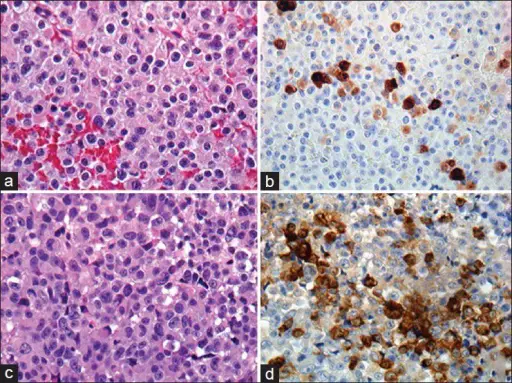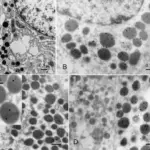Somatotroph adenomas are second most common type of functioning pituitary adenoma.
Associated syndromes include:
- Gigantism
- Acromegaly
What is the Pathology of Somatotroph Adenomas?
The pathology of somatotroph adenomas is:
-Etiology: The cause of somatotroph adenomas is genetic mutation and hormonal stimulation.
-Genes involved: Unknown.
-Pathogenesis: The sequence of events that lead to somatotroph adenomas. Arises from monoclonal growth of pituitary somatotroph cells. The mutation and activation of Gsα result in the generation of cyclic adenosine monophosphate (cAMP), a potent mitogenic stimulus for variety of endocrine cell types, hence endorsing hormone synthesis and secretion and cellular proliferation.
-Morphology: The morphology associated with somatotroph adenomas shows large adenoma.
-Histology: The histology associated with somatotroph adenomas shows densely granulated and sparsely granulated.
How does Somatotroph Adenomas Present?
Patients with somatotroph adenomas typically affect more female than male present at age range of 40 to 50 years old. The symptoms, features, and clinical findings associated with somatotroph adenomas include headaches and visual field flaws, increased body size with disproportionately long arms and legs, and hyperprolactinemia symptoms.
How are Somatotroph Adenomas Diagnosed?
Somatotroph adenomas is diagnosed through IHC study. Imaging studies; high-resolution CT scan and/or MRI suggest an incidental lesion.
How are Somatotroph Adenomas Treated?
Somatotroph adenomas is treated through surgical interventions, somatostatin analog therapy, and possibly radiation therapy.
What is the Prognosis of Somatotroph Adenomas?
The prognosis of somatotroph adenomas is poor as the condition is one of the silent adenomas dragonized when tumor is large.



